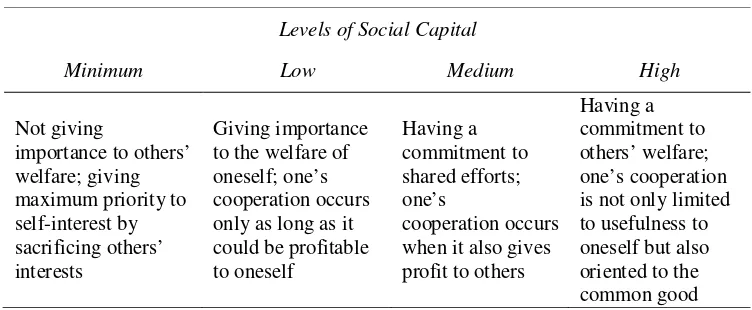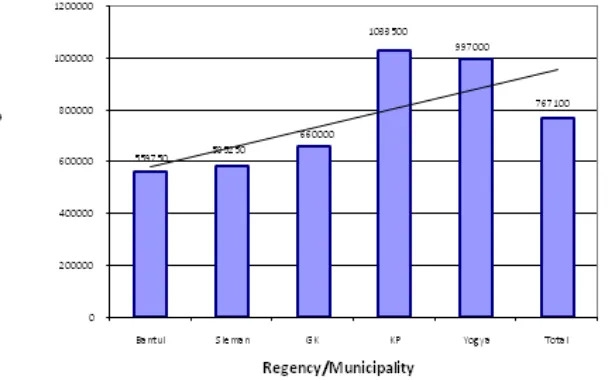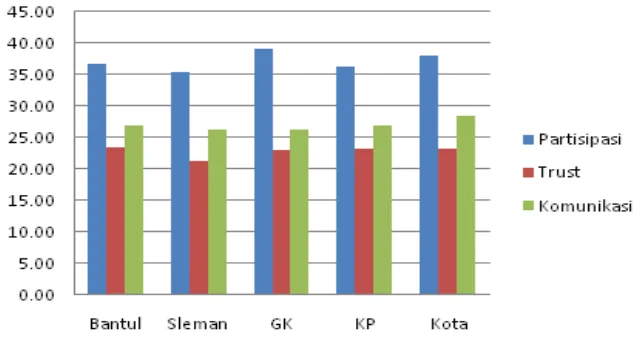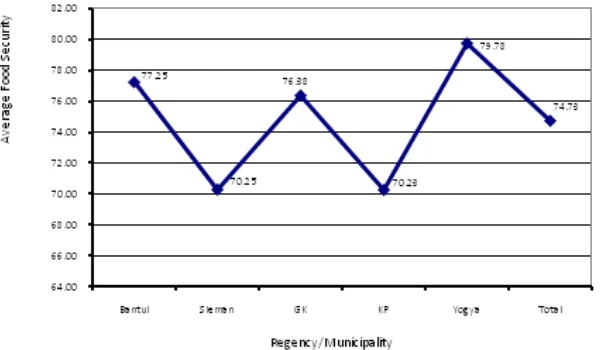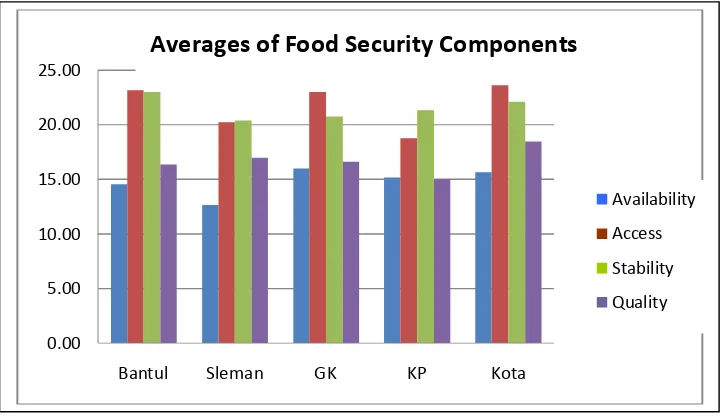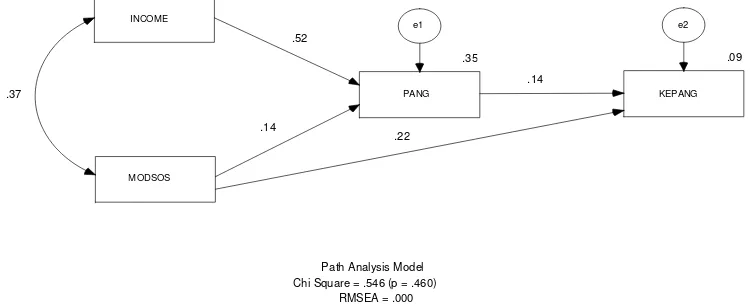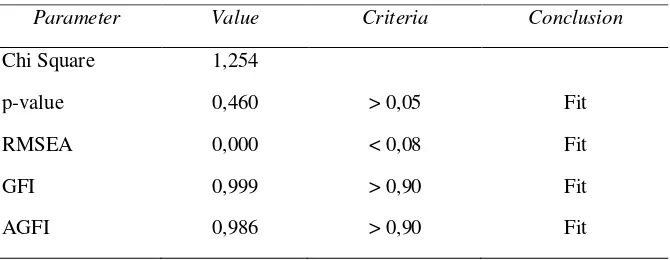Asian Journal of Social Sciences & Humanities Vol. 3(2) May 2014
________ ____________ ____________ ____________ _____ ____________ ____________ ____________ ____________ ___________ ____________ _____ ________ ____________ ____________ ____________ _____ ____________ ____________ ____________ ____________ ___________ ____________ _____________ ____________ ____________ ____________ _____ ____________ ____________ ____________ ____________ ___________ ____________ _____
________ ____________ ____________ ____________ _____ ____________ ____________ ____________ ____________ ___________ ____________ _____ _______ ____________ _____ ____________ ____________ ____________ ___________ ____________ ____________ ______________ ____________ _____ ____________ ____________ ____________ ___________ ____________ ____________ ______________ ____________ _____ ____________ ____________ ____________ ___________ ____________ ____________ ______________ ____________ _____ ____________ ____________ ____________ ___________ ____________ ____________ _______ _____ ___________ ____ ______ ______ ______ ______ ______ ______ ______ ___________ ____________ ____________ ____________ ___________ __________ ___________ ____ ______ ______ ______ ______ ______ ______ ______ ___________ ____________ ____________ ____________ ___________ __________ ___________ ____ ______ ______ ______ ______ ______ ______ ______ ___________ ____________ ____________ ____________ ___________ __________ ___________ ____ ______ ______ ______ ______ ______ ______ ______ ___________ ____________ ____________ ____________ ___________ _____ _ ______ ______ ______ ______ ______ ______ ___________ ____________ ____________ ____________ _____ ______ ____ ______ ______ ______ ______ ______ ______ ___________ ____________ ____________ ____________ _____ ______ ____ ______ ______ ______ ______ ______ ______ ___________ ____________ ____________ ____________ _____ ______ ____ ______ ______ ______ ______ ______ ______ ___________ ____________ ____________ ____________ _____ ______ ___
Copyright © 2014 Leena and Luna International, Oyama, Japan. 105| P a g e (株) アン インター ショ , 小山市、日本.
ISSN: 2186-8492, ISSN: 2186-8484 Print www.ajssh. leena-luna.co.jp
Strategy of Developing Social Capital for the Attainment of Food Security
for Poor Households in the Province of the Yogyakarta Special Region
Sukidjo 1, Ali Muhson2, Mustofa3
Yogyakarta State University, INDONESIA. 1
sukidjo_uny@yahoo.com
ABSTRACT
This article concerns certain research on social capital and on its contribution to the efforts to attain food security. The objectives were a) to know the condition of the social capital and food security of poor households in DIY15 and b) to produce a model of the attainment of food security with social capital as basis in poor households in DIY. In design, it is a research and development project with a four-d model. The research sample consists of 200 poor households obtained through random sampling. The data have been collected by means of a questionnaire. They are data on the attainment of food security and the social capital possessed by poor households16. The data have been analyzed descriptively and path analysis has been used in the analysis. The research results indicate that a) in DIY the social capital of poor households, which consists of socio-political participation, trust, and communication, is medium in category, b) in DIY the food security of poor households, which covers food availability, accessibility, stability, and quality, is medium in category, and c) the results of the testing of the goodness of fit on the model already meet the criteria that have been set so that the theoretical model developed fits the empirical data. The strategy to attain food security could be applied by (a) developing the trust social capital to improve the income of poor households; (b) improving the communication social capital for consumption pattern ordering among poor households, and (c) improving the participation social capital of poor households in society-related social organizations.
Keywords: Social capital, food security, poor household
INTRODUCTION
Social capital enables society members to have opportunities to conduct cooperation with one another. The cooperation built is linked to the following factors: feelings of mutual trust, norms, and networks, all of which are the keys to the social capital recognized by individuals. The feelings of mutual trust are reflected in how one individual and another have an agreement to trust others. The trust increasingly strengthens when supported by norms or values originating from cultural, religious, and institutional ties, among others.
The trust wrapped by a system of norms or values would be optimum when supported by networks. Networks make it easy for society members to discover where and how they should interact and weave mutually beneficial relations. Social networks give roles in making relations between each need, trust, and value of different individuals or the right groups. The quality or depth of the relation between one and another shares a part in the determination of how the mechanism of a social network could function well so that it becomes commonly beneficial. Combined, the feelings of mutual trust, norms, and social networks could become collective action from society to turn into reality the attainment of welfare. Such collective
15
DIY is short for Daerah Istimewa Yogyakarta, or the Yogyakarta Special Region, which is a province located in the south middle part of the island of Java.
16
ISSN: 2186-8492, ISSN: 2186-8484 Print www.ajssh.leena-luna.co.jp
Leena and Luna International, Oyama, Japan. Copyright © 2014
(株) アン インター ショ , 小山市、日本 P a g e | 106 action is highly required for the empowerment of poor households. Data from Dinas Sosial17 in DIY show that in DIY there are 253,621 poor households scattered all over its five administrative parts, which are four kabupatens (or regencies) and one kota (or municipality). (http://kfm.depsos.go.id, accessed on May 17th, 2012).
The food security of a household is the capability of the household in fulfilling the need of food consumption for the members of the household and in accessing food both physically as indicated by the availability of the food and economically in relation with the income of the family. The food security of a household could be seen in both the sufficiency of food consumption and the availability of food fitting norms of nutrition and supported by the buying power of the household. If food consumption is an indicator of vulnerability to problems in household food, it could be said that the household concerned is vulnerable to problems in food security. If the family members consume less than 70 %, the sufficiency in energy recommended is 2100 calories per day. The criterion used for the minimum requirement for food is 2100 calories per day (Kuncoro, 2010: 115)18
There are four components to consider in evaluating the food security of a household, namely, (1) sufficiency in food availability; (2) stability in food availability; (3) accessibility or affordability of food, and (4) quality or safety of food. These four are the main indicators in obtaining the index of food security. The size of food security at the household level is measured by stages by means of combining the four food security indicator components to obtain one index of food security. There are many factors influencing food security; they are, among others, level of education, level of income, occupation, number of children and family size, and pattern of consumption. With the above as background, the research problem concerned here has been formulated as follows: (1) what is the condition of the social capital in poor households in DIY like?, (2) what is the condition of the food security in poor households in DIY like?, and (3) what is the model of developing food security with social capital as basis in poor households in DIY like?
THEORETICAL REVIEW
Social Capital of Poor Households
A poor household is a household fulfilling at the minimum nine of the fourteen criteria determined by Badan Pusat Statistik19 (BPS, 2008; Murniningtyas, 2008: 20). Simply, social capital could be interpreted as informal values or norms shared by members of a group so that it enables a cooperation to be weaved among them (Fukuyama. 2002). Meanwhile, according to Hasbullah (2006), social capital is defined as the norms forming the quality and quantity of social relations in society. Social capital functions as simultaneous unifier of group members. According to Woolcock (1998), there are three dimensions of social capital, namely, (a) bonding social capital; (b) bridging social capital; and (c) linking social capital.
There are various social capital measurement methods which could be adjusted to local conditions. Ronald Inglehart (1995) develops social capital in the component of trust and membership in an association. Ony and Bullen (1997) use eight indicators of social capital, namely, participation, activity, feeling of trust or safety, connection in the neighborhood environment, connection with relatives or friends, tolerance towards difference, life values,
17
Dinas Sosial, or the Social Agency, is the state agency assigned with the management and empowerment of poor households by providing social aid.
18
See Mudrajat Kuncoro. 2010. Ekonomika Pembangunan: Teori, Masalah dan Kebijakan (Yogyakarta: STIM YKPN).
19
Asian Journal of Social Sciences & Humanities Vol. 3(2) May 2014
________ ____________ ____________ ____________ _____ ____________ ____________ ____________ ____________ ___________ ____________ _____ ________ ____________ ____________ ____________ _____ ____________ ____________ ____________ ____________ ___________ ____________ _____________ ____________ ____________ ____________ _____ ____________ ____________ ____________ ____________ ___________ ____________ _____
________ ____________ ____________ ____________ _____ ____________ ____________ ____________ ____________ ___________ ____________ _____ _______ ____________ _____ ____________ ____________ ____________ ___________ ____________ ____________ ______________ ____________ _____ ____________ ____________ ____________ ___________ ____________ ____________ ______________ ____________ _____ ____________ ____________ ____________ ___________ ____________ ____________ ______________ ____________ _____ ____________ ____________ ____________ ___________ ____________ ____________ _______ _____ ___________ ____ ______ ______ ______ ______ ______ ______ ______ ___________ ____________ ____________ ____________ ___________ __________ ___________ ____ ______ ______ ______ ______ ______ ______ ______ ___________ ____________ ____________ ____________ ___________ __________ ___________ ____ ______ ______ ______ ______ ______ ______ ______ ___________ ____________ ____________ ____________ ___________ __________ ___________ ____ ______ ______ ______ ______ ______ ______ ______ ___________ ____________ ____________ ____________ ___________ _____ _ ______ ______ ______ ______ ______ ______ ___________ ____________ ____________ ____________ _____ ______ ____ ______ ______ ______ ______ ______ ______ ___________ ____________ ____________ ____________ _____ ______ ____ ______ ______ ______ ______ ______ ______ ___________ ____________ ____________ ____________ _____ ______ ____ ______ ______ ______ ______ ______ ______ ___________ ____________ ____________ ____________ _____ ______ ___
Copyright © 2014 Leena and Luna International, Oyama, Japan. information or communication, social cohesion or inclusiveness, and political empowerment and act. According to Hasbullah (2006), there are six main elements of social capital, namely, participation in a network, reciprocity, trust, social norms, values, and proactive acts.
The size of social capital attached in a society could be measured to see whether it possesses minimum, low, medium, or high levels of social capital. Uphoff in Lenggono (2004) explains the continuum of social capital as follows.
Table 1. Levels of Social Capital According to Uphoff
Levels of Social Capital
In Undang-Undang Republik Indonesia No. 18 Tahun 2012 (or Law No. 18 of Year 2012 of the Republic of Indonesia) concerning food, it is mentioned that food security is the condition of the need for food being fulfilled as reflected in the availability of food which is both quantitatively and qualitatively sufficient, safe, diverse, nutritious, and evenly distributed to enable one to continuously have a healthy, active, and productive life. The factors influencing household food security are sufficiency in food availability, stability in food availability, food accessibility or affordance, and food quality or safety.
RESEARCH METHOD
The development of the social capital model in the course of attaining food security in poor households in the research concerned here has used the four-d model. According to Thiaragajan et al. (1994), the stages of model development are defining, designing, developing, and disseminating. In the research, only three stages, namely, defining, designing, and developing, have been used. In the stage of defining, the activity of literature review was conducted, in which various relevant literature and research results were studied to analyze social capital and food security and identify their indicators. The activity in the stage of designing was planning the format for the model development so that a draft of the model for social capital and food security was obtained while in the stage of development the activity of model development and experts’ review through focus groups discussions (FGD)20 was conducted to be followed by a series of tryouts and revisions so that a master of the model of development was obtained. Then a test of the model was empirically conducted to discover the goodness of fit of the theoretical model developed. The empirical test on the model was conducted on a sample consisting of 200 respondents obtained through random
20
ISSN: 2186-8492, ISSN: 2186-8484 Print www.ajssh.leena-luna.co.jp
Leena and Luna International, Oyama, Japan. Copyright © 2014
(株) アン インター ショ , 小山市、日本 P a g e | 108 sampling. The data were compiled by means of questionnaire and documentation use and analyzed both descriptively and quantitatively with path analysis.
RESULTS AND DISCUSSIONS
Profile of the Poor Household in DIY
Daerah Istimewa Yogyakarta (or DIY, for short), or the Special Region of Yogyakarta, is located in the south middle part of Pulau Jawa, or the Island of Java, with an area of 3,185.80 km2, which is 0,17 % of the total area of Indonesia. It is a province-level region administratively consisting of one municipality, which is the city known as Kota Yogyakarta, and four kabupatens, or regencies, namely, those of Bantul, Kulon Progo, Gunungkidul, and Sleman. In the research, food security is analyzed with households as the units of analysis. On the average, the members of a household are four in number. The highest formal education of 58% of the heads of poor households is of primary school, that of 20% of them is of junior high school, and that of 33% of them is of senior high school or vocational high school. It indicates that the educational levels of the heads of poor households in DIY belong to the low category. Around 35% of the heads of poor households earn their living as laborers, around 31% of them work as farmers, and around 11% of them are out of work.
As for the average incomes of poor households in the regencies and municipality in DIY, they are presented as below:
Figure 1. Average Income of the Poor Household in DIY
With the data in Figure 1 as basis, it is found that the lowest average income is in Kabupaten Bantul, amounting to Rp 559,750.-, and the highest one is in Kabupaten Kulonprogo, amounting to Rp 1,033,500.-. If the poverty line of September 2013 amounting to Rp 292,951.- per capita per month21, or Rp 1,171,804.- per family22, is used, the incomes of poor households in DIY are still below the national poverty line. With such an income condition, up to 62.5% of the poor households state that their income is not enough for paying for household needs. As for the strategies they use to sufficiently fulfill the needs, they are as follows: seeking additional income, seeking loans, asking for help from siblings or offspring, selling or pawning goods they possess, and others.
21
See page 9 of Kompas of January 3rd, 2014. 22
Asian Journal of Social Sciences & Humanities Vol. 3(2) May 2014
________ ____________ ____________ ____________ _____ ____________ ____________ ____________ ____________ ___________ ____________ _____ ________ ____________ ____________ ____________ _____ ____________ ____________ ____________ ____________ ___________ ____________ _____________ ____________ ____________ ____________ _____ ____________ ____________ ____________ ____________ ___________ ____________ _____
________ ____________ ____________ ____________ _____ ____________ ____________ ____________ ____________ ___________ ____________ _____ _______ ____________ _____ ____________ ____________ ____________ ___________ ____________ ____________ ______________ ____________ _____ ____________ ____________ ____________ ___________ ____________ ____________ ______________ ____________ _____ ____________ ____________ ____________ ___________ ____________ ____________ ______________ ____________ _____ ____________ ____________ ____________ ___________ ____________ ____________ _______ _____ ___________ ____ ______ ______ ______ ______ ______ ______ ______ ___________ ____________ ____________ ____________ ___________ __________ ___________ ____ ______ ______ ______ ______ ______ ______ ______ ___________ ____________ ____________ ____________ ___________ __________ ___________ ____ ______ ______ ______ ______ ______ ______ ______ ___________ ____________ ____________ ____________ ___________ __________ ___________ ____ ______ ______ ______ ______ ______ ______ ______ ___________ ____________ ____________ ____________ ___________ _____ _ ______ ______ ______ ______ ______ ______ ___________ ____________ ____________ ____________ _____ ______ ____ ______ ______ ______ ______ ______ ______ ___________ ____________ ____________ ____________ _____ ______ ____ ______ ______ ______ ______ ______ ______ ___________ ____________ ____________ ____________ _____ ______ ____ ______ ______ ______ ______ ______ ______ ___________ ____________ ____________ ____________ _____ ______ ___
Copyright © 2014 Leena and Luna International, Oyama, Japan. 109| P a g e (株) アン インター ショ , 小山市、日本.
ISSN: 2186-8492, ISSN: 2186-8484 Print www.ajssh. leena-luna.co.jp
Social Capital of Poor Households in DIY
To obtain data concerning social capital, a questionnaire having twenty-one items, each of which with five alternative answers given, has been used. With the data collected from the 200 respondents as basis, the research result obtained is that generally 72% of the poor households in DIY possess social capital of the medium category, 14.5% of them possess that of the low category, and 13.5% of them possess that of the high category. This is in line with a characteristic of the society in DIY: possessing a social spirit of a high level, also in their society-related activities23. Viewed by regency, a picture of social capital is as presented in the following table:
Figure 2. Social Capital of Poor Households in Regencies and Municipality
On the whole, the highest average score for social capital, namely, 89.35, is of the poor households in Kota Yogyakarta while the lowest, 82.48, is of those in Kabupaten Sleman. Meanwhile, viewed from the point of the social capital components (participation, trust, and communication), the scores for the regencies and municipality are as presented in the following figure:
Figure 3. Diagram of the Average Scores for Social Capital Components of the Regencies and Municipality
23
ISSN: 2186-8492, ISSN: 2186-8484 Print www.ajssh.leena-luna.co.jp
Leena and Luna International, Oyama, Japan. Copyright © 2014
(株) アン インター ショ , 小山市、日本 P a g e | 110 From the diagram, it is known that the highest average score for socio-political participation is of the poor households in Kabupaten Gunungkidul and the lowest average score for that is of those in Kabupaten Sleman. For the trust component, the highest average score is of the poor households in Kabupaten Bantul and the lowest average score is of those in Kabupaten Sleman, while the highest average score for the communication component is of the poor households in Kota Yogyakarta and the lowest one for that is of the poor households in Kabupaten Gunungkidul.
Food Security of Poor Households in DIY
The indicators used to measure food security are sufficiency in food availability, stability in the availability, food accessibility or affordability, and food quality or safety. Food security in the research is limited to the main food consumed by poor households, which is rice. To obtain data about food security, a questionnaire consisting of twenty-one items with each of them having five alternative given answers has been used. With the data obtained from 200 respondents as basis, the research result gained is that on the whole 17% of the poor households possess food security of the high category, 70% of them possess that of the medium category, and 13% of them possess that of the low category. Meanwhile, among the regencies and municipality, it is learned that the highest average score for food security is of the poor households in Kota Yogyakarta while the lowest average score for that is of those in Kabupaten Kulonprogo. The complete data are presented in the following figure:
Figure 4. Food Security of Poor Households by Regency
Asian Journal of Social Sciences & Humanities Vol. 3(2) May 2014
__ ______ ______ ______ ______ ______ ______ ______ _____ ____________ ____________ ____________ ____________ _____ ______ ______ ______ _____ __ ______ ______ ______ ______ ______ ______ ______ _____ ____________ ____________ ____________ ____________ _____ ______ ______ ______ _______ ______ ______ ______ ______ ______ ______ ______ _____ ____________ ____________ ____________ ____________ _____ ______ ______ ______ _____
__ ______ ______ ______ ______ ______ ______ ______ _____ ____________ ____________ ____________ ____________ _____ ______ ______ ______ _____ _ ______ ______ ______ _____ ____________ ____________ ____________ ___________ ______ ______ ______ ______ ______ __ ______ ______ ______ _____ ____________ ____________ ____________ ___________ ______ ______ ______ ______ ______ __ ______ ______ ______ _____ ____________ ____________ ____________ ___________ ______ ______ ______ ______ ______ __ ______ ______ ______ _____ ____________ ____________ ____________ ___________ ______ ______ ______ ______ ______ ______ ______ _______________ ____________ ____________ ____________ _____ ______ ______ ______ ______ ______ ______ ______ ______ _______________ ______ _______________ ____________ ____________ ____________ _____ ______ ______ ______ ______ ______ ______ ______ ______ _______________ ______ _______________ ____________ ____________ ____________ _____ ______ ______ ______ ______ ______ ______ ______ ______ _______________ ______ _______________ ____________ ____________ ____________ _____ ______ ______ ______ ______ ______ ______ ______ ______ __________ _ ____________ ____________ ____________ _____ ______ ______ ______ ______ ______ ______ ______ _____ __________ ____________ ____________ ____________ _____ ______ ______ ______ ______ ______ ______ ______ _____ __________ ____________ ____________ ____________ _____ ______ ______ ______ ______ ______ ______ ______ _____ __________ ____________ ____________ ____________ _____ ______ ______ ______ ______ ______ ______ ______ _____ _________
Copyright © 2014 Leena and Luna International, Oyama, Japan. 111| P a g e (株) アン インター ショ , 小山市、日本.
ISSN: 2186-8492, ISSN: 2186-8484 Print www.ajssh. leena-luna.co.jp
Figure 5. Average Scores for Food Security Components of Poor Households in the Regencies and Municipality in DIY
DEVELOPMENT OF THE MODEL
The activity of model development has been conducted through the stages of (1) studying relevant theories and research results, (2) developing a hypothetical model, (3) restricted testing, and (4) empirical testing.
A study of supporting theories and relevant research results has been conducted to construct an early hypothetical model. For the purpose of developing the hypothetical model, involvement of experts in related fields has done through the activity of focus group discussions. The social capital variable has been measured by viewing its indicators, namely, socio-political participation, communication, and trust. The food security variable has been measured by viewing its indicators, namely, food availability, food accessibility, food stability, and food quality. Experts have suggested the need to incorporate the income variable into the model because household income would influence social life or social activity and food security.
With the theoretical equation as basis, an empirical testing is conducted on the data by using path analysis to test any causal relation between two variables or among more than two variables, which makes it possible to conduct the testing by using the intermediate variable (Ghozali, 2012)24.
Figure 6. Theoretical Model for Social Capital and Food Security
24
See Imam Gozali and Fuad (Semarang: Badan Penerbit Universitas Diponegro, 2012)
0.00 5.00 10.00 15.00 20.00 25.00
Bantul Sleman GK KP Kota
Rata-Rata Komponen Ketahanan Pangan
Persediaan
Akses
Stabilitas
Kualitas Availability
Access
Stability
Quality
Averages of Food Security Components
X1
X2
ISSN: 2186-8492, ISSN: 2186-8484 Print www.ajssh.leena-luna.co.jp
Leena and Luna International, Oyama, Japan. Copyright © 2014
(株) アン インター ショ , 小山市、日本 P a g e | 112 Legend:
X1 = the INCOME variable, for income of the poor household
X2 = the MODSOS variable, for modal sosial or social capital
X3 = the PANGAN variable, for konsumsi pangan or food consumption
Y = the KEPANG variable, for Ketahanan Pangan or food security
. With the result of the model development involving 200 respondents as basis, a model is finally found to be tested as follows:
Figure 7. Testing of the Theoretical Model
With the model above as basis, it is seen that the direct influence of income on food security is only 0.06 and the result of the t-test is not significant so that the model above is modified into the following:
Figure 8. Empirical Model of Social Capital and Food Security
To determine the goodness of fit of the model, certain criteria are used. They are as follows2:
a. the Chi-Square value is small and insignificant or p is more than 0.05, b. the RMSEA value is less than 0.08,
Path Analysis Model Chi Square = .546 (p = .460)
RMSEA = .000 GFI = .999 AGFI = .986
INCOME
MODSOS
.35
PANG
.09
KEPANG
.52
.14
.22
.14 .37
e1 e2
Path Analysis Model
Chi Square = .000 (p = \p) RMSEA = \rmsea
GFI = 1.000 AGFI = \AGFI
INCOME
MODSOS
.35
PANG
.09
KEPANG
.52
.14
.21
.11 .37
Asian Journal of Social Sciences & Humanities Vol. 3(2) May 2014
________ ____________ ____________ ____________ _____ ____________ ____________ ____________ ____________ ___________ ____________ _____ ________ ____________ ____________ ____________ _____ ____________ ____________ ____________ ____________ ___________ ____________ _____________ ____________ ____________ ____________ _____ ____________ ____________ ____________ ____________ ___________ ____________ _____
________ ____________ ____________ ____________ _____ ____________ ____________ ____________ ____________ ___________ ____________ _____ _______ ____________ _____ ____________ ____________ ____________ ___________ ____________ ____________ ______________ ____________ _____ ____________ ____________ ____________ ___________ ____________ ____________ ______________ ____________ _____ ____________ ____________ ____________ ___________ ____________ ____________ ______________ ____________ _____ ____________ ____________ ____________ ___________ ____________ ____________ _______ _____ ___________ ____ ______ ______ ______ ______ ______ ______ ______ ___________ ____________ ____________ ____________ ___________ __________ ___________ ____ ______ ______ ______ ______ ______ ______ ______ ___________ ____________ ____________ ____________ ___________ __________ ___________ ____ ______ ______ ______ ______ ______ ______ ______ ___________ ____________ ____________ ____________ ___________ __________ ___________ ____ ______ ______ ______ ______ ______ ______ ______ ___________ ____________ ____________ ____________ ___________ _____ _ ______ ______ ______ ______ ______ ______ ___________ ____________ ____________ ____________ _____ ______ ____ ______ ______ ______ ______ ______ ______ ___________ ____________ ____________ ____________ _____ ______ ____ ______ ______ ______ ______ ______ ______ ___________ ____________ ____________ ____________ _____ ______ ____ ______ ______ ______ ______ ______ ______ ___________ ____________ ____________ ____________ _____ ______ ___
Copyright © 2014 Leena and Luna International, Oyama, Japan. 113| P a g e (株) アン インター ショ , 小山市、日本.
ISSN: 2186-8492, ISSN: 2186-8484 Print www.ajssh. leena-luna.co.jp
c. the GFI value is more than 0.90, and d. the AGFI value is more than 0.90.
Table 2. Testing the Goodness of Fit of the Model
With the results of the testing of goodness of fit of the model above as basis, it is found that all the parameters used already fulfill the criteria that have been set so that it could be said that the theoretical model developed fits the empirical data.
Relation Between Income and Food Security
There is an indirect relation between income and food security as seen from the results that the regression and correlation coefficients are all significantly < 0.05. Therefore, it could then be concluded that the income of poor households in DIY has a positive indirect effect on their food security through the food consumption pattern variable. It means that among poor households a higher level of income would cause a higher level of food consumption and it would in turn cause a higher level of food security.
Relation Between Social Capital and Food Security
There is a direct relation between social capital and food security as seen from the results that the regression and correlation coefficients are all significantly < 0.05. Therefore, it could then be concluded that the social capital of poor households in DIY has a positive direct effect on their food security. It means that among poor households in DIY a higher level of social capital would cause a higher level of food security.
STRATEGY FOR THE FOOD SECURİTY OF POOR HOUSEHOLDS
With the model of food security gained from the results of the research concerned here as basis, the strategy for the attainment of the food security of poor households in DIY could be applied in the following ways.
Developing the Trust Social Capital to Improve the Income of Poor Households
The attainment of food security could be done by continuing the empowerment programs already in existence like Kelompok Usaha Bersama (Shared Business Group) and facilities of small business loans through programs like Kredit Usaha Rakyat (People’s Business Credit) and Program Nasional Pemberdayaan Masyarakat (Society Empowerment National Program). In addition, the entrepreneurship culture needs to be developed in poor household members so that in them would grow and develop the mental attitude that would urge them to make productive economic efforts in accordance with the potentials and creativity they possess. This strategy is applied through activities of social guidance, motivation,
Parameter Value Criteria Conclusion
Chi Square 1,254
p-value 0,460 > 0,05 Fit
RMSEA 0,000 < 0,08 Fit
GFI 0,999 > 0,90 Fit
ISSN: 2186-8492, ISSN: 2186-8484 Print www.ajssh.leena-luna.co.jp
Leena and Luna International, Oyama, Japan. Copyright © 2014
(株) アン インター ショ , 小山市、日本 P a g e | 114 entrepreneurship training, job apprenticeship, business accompaniment, and access to social welfare sources.
Improving the Communication Social Capital for the Ordering of the Consumption Pattern of Poor Households
To attain food security, an ordering of the consumption pattern of poor households could be made so that food consumption is considered more important than non-food consumption. Funds at first usually intended for non-food consumption are redirected to savings because saving is one of the best ways to compile capital in the course of improving one’s standard of living. The saving habit would help poor households to act economically, to maintain discipline, and to be future-oriented in doing work. Therefore, an incentive for saving is necessary because it would encourage them to save, which is highly beneficial for the provision of business capital.
Improving the Participation Social Capital in Society-Related Social Organizations
To improve the food security of poor households, the social capital needs to be improved, especially through the empowerment of Pendidikan Kesejahteraan Keluarga25 (or Family Welfare Education), Dasawisma26, Rukun Tetangga27 (or Neighborhood Community), and Kelompok Swadaya Masyarakat28 (or Community Self-Supporting Group). The participation of poor households in such organizations is highly important so that the matter of food security becomes a common problem which also needs to be overcome together.
CONCLUSIONS
1. On the whole the social capital of poor households in DIY is of the medium category. The highest average score for socio-political participation is of poor households in Kabupaten Gunungkidul. The highest average score for trust is of poor households in Kabupaten Bantul. The highest average score for communication is of poor households in Kota Yogyakarta.
2. Most poor households in DIY, or 70% of them, possess food security of the medium category. For the food availability of the respondents put under research, the highest average score is of the poor households in Kabupaten Gunungkidul. For the food accessibility, the highest average score is of the poor households in Kota Yogyakarta. The highest average score for the food stability of poor households is of the poor households in Kabupaten Bantul. The highest average score for food quality is of the poor households in Kota Yogyakarta.
3. With the results of the testing of goodness of fit on the model as basis, it is found that all the parameters used already fulfill the criteria that have been set so that the theoretical model developed fits the empirical data. The income of poor households has indirect positive effects on the food security of poor households in DIY through the food consumption pattern variable. The social capital of poor households has direct positive effects on the food security of poor households in DIY. It means that a higher level of the social capital of the poor households would cause a higher level of their food security
25
Perkumpulan Kesejahteraan Keluarga (or PKK, for short) is a housewives’ association at the village level. 26
Dasawisma is a housewives’ association whose members come from ten households located close to each other
27
Rukun Tetangga is the smallest association unit whose members are heads of the families 28
Asian Journal of Social Sciences & Humanities Vol. 3(2) May 2014
________ ____________ ____________ ____________ _____ ____________ ____________ ____________ ____________ ___________ ____________ _____ ________ ____________ ____________ ____________ _____ ____________ ____________ ____________ ____________ ___________ ____________ _____________ ____________ ____________ ____________ _____ ____________ ____________ ____________ ____________ ___________ ____________ _____
________ ____________ ____________ ____________ _____ ____________ ____________ ____________ ____________ ___________ ____________ _____ _______ ____________ _____ ____________ ____________ ____________ ___________ ____________ ____________ ______________ ____________ _____ ____________ ____________ ____________ ___________ ____________ ____________ ______________ ____________ _____ ____________ ____________ ____________ ___________ ____________ ____________ ______________ ____________ _____ ____________ ____________ ____________ ___________ ____________ ____________ _______ _____ ___________ ____ ______ ______ ______ ______ ______ ______ ______ ___________ ____________ ____________ ____________ ___________ __________ ___________ ____ ______ ______ ______ ______ ______ ______ ______ ___________ ____________ ____________ ____________ ___________ __________ ___________ ____ ______ ______ ______ ______ ______ ______ ______ ___________ ____________ ____________ ____________ ___________ __________ ___________ ____ ______ ______ ______ ______ ______ ______ ______ ___________ ____________ ____________ ____________ ___________ _____ _ ______ ______ ______ ______ ______ ______ ___________ ____________ ____________ ____________ _____ ______ ____ ______ ______ ______ ______ ______ ______ ___________ ____________ ____________ ____________ _____ ______ ____ ______ ______ ______ ______ ______ ______ ___________ ____________ ____________ ____________ _____ ______ ____ ______ ______ ______ ______ ______ ______ ___________ ____________ ____________ ____________ _____ ______ ___
Copyright © 2014 Leena and Luna International, Oyama, Japan. 115| P a g e (株) アン インター ショ , 小山市、日本.
ISSN: 2186-8492, ISSN: 2186-8484 Print www.ajssh. leena-luna.co.jp
4. The strategy of developing social capital to attain food security could be applied by (1) improving the trust social capital in empowerment programs; (2) improving the communication social capital for consumption pattern ordering; and (3) improving the participation social capital in society-related organizational activities.
SUGGESTIONS
1. The organizational capacity in society needs to be improved to encourage in it the mindset that makes its members possess the desire to build supple social relations, broader work nets, and active participation in living within a society.
2. Food stability of poor households needs to be maintained by giving the Raskin (short for Beras untuk Rakyat Miskin, meaning Rice for Poor People) subsidy to meet the food consumption need of poor households.
3. The income of poor households needs to be improved by developing the entrepreneur culture in them. In addition, poor households need to be able to receive productive business loans with small interest.
REFERENCES
[1] Atmojo, S.M., Syarif Hidayat, D., Sukandar, M. & Latifah. (1995). Laporan Studi Identifikasi Daerah Rawan Pangan. Proyek Pengembangan Diversifikasi Pangan dan
Gizi Departemen Pertanian [Report of Study Identifying Regions Vulnerable to Food
Problems. Project of Development of Food and Nutrition Diversification of the Dept. of Agriculture] – Jurusan GMSK, Fakultas Pertanian – Institut Pertanian Bogor (IPB) ([Dept. of GMSK, Faculty of Agriculture – Bogor Agricultural Institute]. Bogor: IPB
[2] Badan Pusat Statistik (BPS). (1999). Statistik Kesejahteraan Rakyat Indonesia
[Statistics of the Indonesian People’s Welfare]. Jakarta: BPS.
[3] _________. (2009). Profil Kemiskinan di Indonesia [Profile of the Property in Indonesia]. Jakarta: BPS.
[4] Coleman, J. S. (1988). Social Capital in the Creation of Human Capital, The American
Journal of Sociology, Vol. 94, Supplement: Organizations and Institutions:
Sociological and Economic Approaches to the Analysis of Social Structure.
[5] FAO. (1996). World Food Summit, November 13th-17th, 1996. Volume 1, 2, and 3. FAO, Rome.
[6] Fukuyama, F. (2002). The Great Disruption: Hakikat Manusia dan Rekonstitusi
Tatanan Sosial [Human Nature and the Reconstitution of the Social Order].
Yogyakarta: CV Qalam.
[7] Gozali, I.& Fuad. (2012). Structural Equation Modeling: Teori, Konsep & Aplikasi
dengan Program Lisrel 8.54 [Theory, Concept, and Application with the Program of
Lisrel 8.54]. Semarang: Badan Penerbit Universitas Diponegoro [Publishing Agency of the Diponegoro University].
[8] Grootaert, C. (1999). Social Capital, Household Welfare, and Poverty in Indonesia,
Local-Level Institutions Study of the Social Development Department on
Environmentally and Socially Sustainable Development Network, The World Bank
[9] Hasan, I. (1995). Aku Cinta Makanan Indonesia dalam Rangka mewujudkan Ketahanan Pangan. Pengarahan Kursus Penyegar Ilmu Gizi dan Kongres Nasional
ISSN: 2186-8492, ISSN: 2186-8484 Print www.ajssh.leena-luna.co.jp
Leena and Luna International, Oyama, Japan. Copyright © 2014
(株) アン インター ショ , 小山市、日本 P a g e | 116 Food Security. Orientation in the Refreshing Course on Nutrition and the National Congress of PERSAGI X, November 21st-23rd]. Bandung.
[10] Hasbullah, J. (2006). Social Capital: Menuju Keunggulan Budaya Manusia Indonesia
[Toward the Cultural Excellence of the Indonesian Human Individuals]. Jakarta: MR-United Press.
[11] Hobbs, G. (2000). What is social capital? A Brief Literature Overview, Economic and Social Research Foundation, Caledonia, UK.
[12] Kuncoro, M. (2010). Ekonomika Pembangunan: Teori, Masalah dan Kebijakan
[Economics of National Development: Theories, Problems, and Policies].
Yogyakarta: UPP STIM YKPN.
[13] Lembaga Penelitian Universitas Padjadjaran. (2009). Pemetaan dan Pemanfaatan Modal Sosial dalam Penanggulangan Kemiskinan di Jawa Barat. Laporan Penelitian. Kerjasama Badan Penelitian dan Pengembangan Daerah Provinsi Jawa Barat dengan Lembaga Penelitian Universitas Padjadjaran [Mapping and Utilization of Social Capital in Coping With Poverty in West Java. Research Report. Cooperation Between the Agency of Research and Regional Development of the Province of West Java and the Research Institution of the Padjadjaran University].
[14] Lenggono, P. S. (2004). Modal Sosial dalam Pengelolaan Tambak: Studi Kasus Pada Komunitas Petambak di Desa Muara Pantuan Kecamatan Anggana Kabupaten Kutai Kartanegara. Tesis. Sekolah Pascasarjana, Fakultas Perikanan dan Ilmu Kelautan, Institut Pertanian Bogor (IPB) [Social Capital in Fish Farm Management in Desa Muara Pantuan, Kecamatan Anggana, Kabupaten Kutai Kartanegara. Thesis. Post-Graduate School, Faculty of Fishery and Oceanography, Bogor Agricultural Institute].
[15] Mason, & Lind, (1996). Teknik Statistik Untuk Bisnis dan Ekonomi [Statistic Techniques for Business and Economics]. Jakarta: Erlangga.
[16] Hanafi,M. I.(2009). Hubungan Modal Sosial Dengan Kemiskinan Masyarakat
Nelayan Di Desa Panimbang Jaya, Pandeglang.Tesis. Sekolah Pascasarjana, Fakultas
Perikanan dan Ilmu Kelautan, Institut Pertanian Bogor [Relation Between Social Capital and Fishermen’s Community’s Poverty in Desa Panimbang Jaya, Pandeglang. Thesis. Post-Graduate School, Faculty of Fishery and Oceanography, Bogor Agricultural Institute].
[17] Murder, N. (1998). Kepribadian Jawa [Javanese Personality]. Jakarta: LP3ES.
[18] Murniningtyas, E. (2008. Perencanaan dan Penganggaran yang Berpihak pada Masyarakat Miskin [Planning and Budgeting Siding With the Poor Communities]. Jakarta: Bappenas.
[19] Moehdji, S. (1986). Pemeliharaan Gizi Bayi dan Anak [Maintenance of Babies’ and Children’s Nutrition]. Jakarta: Batara.
[20] Peraturan Presiden Republik Indonesia Nomor 83 Tahun (2006). Tentang Dewan Ketahanan Pangan [Regulation of the President of the Republic of Indonesia No. 83 of Year 2006 About the Food Security Council]
Asian Journal of Social Sciences & Humanities Vol. 3(2) May 2014
________ ____________ ____________ ____________ _____ ____________ ____________ ____________ ____________ ___________ ____________ _____ ________ ____________ ____________ ____________ _____ ____________ ____________ ____________ ____________ ___________ ____________ _____________ ____________ ____________ ____________ _____ ____________ ____________ ____________ ____________ ___________ ____________ _____
________ ____________ ____________ ____________ _____ ____________ ____________ ____________ ____________ ___________ ____________ _____ _______ ____________ _____ ____________ ____________ ____________ ___________ ____________ ____________ ______________ ____________ _____ ____________ ____________ ____________ ___________ ____________ ____________ ______________ ____________ _____ ____________ ____________ ____________ ___________ ____________ ____________ ______________ ____________ _____ ____________ ____________ ____________ ___________ ____________ ____________ _______ _____ ___________ ____ ______ ______ ______ ______ ______ ______ ______ ___________ ____________ ____________ ____________ ___________ __________ ___________ ____ ______ ______ ______ ______ ______ ______ ______ ___________ ____________ ____________ ____________ ___________ __________ ___________ ____ ______ ______ ______ ______ ______ ______ ______ ___________ ____________ ____________ ____________ ___________ __________ ___________ ____ ______ ______ ______ ______ ______ ______ ______ ___________ ____________ ____________ ____________ ___________ _____ _ ______ ______ ______ ______ ______ ______ ___________ ____________ ____________ ____________ _____ ______ ____ ______ ______ ______ ______ ______ ______ ___________ ____________ ____________ ____________ _____ ______ ____ ______ ______ ______ ______ ______ ______ ___________ ____________ ____________ ____________ _____ ______ ____ ______ ______ ______ ______ ______ ______ ___________ ____________ ____________ ____________ _____ ______ ___
Copyright © 2014 Leena and Luna International, Oyama, Japan. 117| P a g e (株) アン インター ショ , 小山市、日本.
ISSN: 2186-8492, ISSN: 2186-8484 Print www.ajssh. leena-luna.co.jp
[22] Putnam, R. (1993). The Prosperous Community: Social Capital and Public Life, AmericanProspect, No. 13. The New Prospect, Inc.
[23] Soetrisno L. (1996). Beberapa Catatan Dalam Upaya Meningkatkan Ketahanan
Pangan Rumah Tangga Indonesia. Laporan Lokakarya Ketahanan Pangan Rumah
Tangga. Departemen Pertanian RI – UNICEF [Some Notes in the Effort of Improving the Food Security of Indonesian Households. Report of Workshop on Household Food Security. Department of Agriculture of the Republic of Indonesia – UNICEF].
[24] Soetrisno, N. (1995). Ketahanan Pangan Dunia: Konsep, Pengukuran dan Faktor Dominan. Majalah Pangan [World Food Security: Concepts, Measurements, and Dominant Factors. Food Magazine] No.21, Vol. IV. Jakarta: Puslitbang Bulog.
[25] _______, N. (1998). Ketahanan Pangan [Food Security]. Proceedings of Widyakarya Nasional Pangan dan Gizi VI [National Periodic Forum on Food and Nutrition VI]. Serpong, February 17th-20th. Jakarta: LIPI.
[26] Suhadi Purwantoro, M. (2009).Strategi Pencapaian Ketahanan Pangan Pada Rumah Tangga Miskin Di Provinsi DIY. Laporan Penelitian Stranas. Universitas Negeri Yogyakarta [Strategy of Attaining Food Security in Poor Households in the DIY Province. National Strategy Research Report. State University of Yogyakarta].
[27] Suhardjo. (1989). Sosio Budaya Gizi. Departemen Pendidikan dan Kebudayaan, Direktorat Jenderal Pendidikan Tinggi, Pusat Antar Universitas Pangan dan Gizi [Nutrition Socio-Culture. Department of Education and Culture, Directorate General of Higher Education, Inter-University Center for Food and Nutrition].. Bogor: IPB.
[28] Tabor S. & Soekirman, M. D.(2000). Keterkaitan Antara Krisis Ekonomi, Ketahanan
Pangan dan Perbaikan Gizi [Relationships Among Economic Crisis, Food Security,
and Nutrition Improvement]. Proceedings of Widyakarya Nasional Pangan dan Gizi VII. Jakarta, February 29th – March 2nd. Jakarta: LIPI.
[29] Undang-Undang Republik Indonesia Nomor 12 Tahun (2012). tentang Pangan [Law No. 12 of Year 2012 of the Republic of Indonesia About Food]
